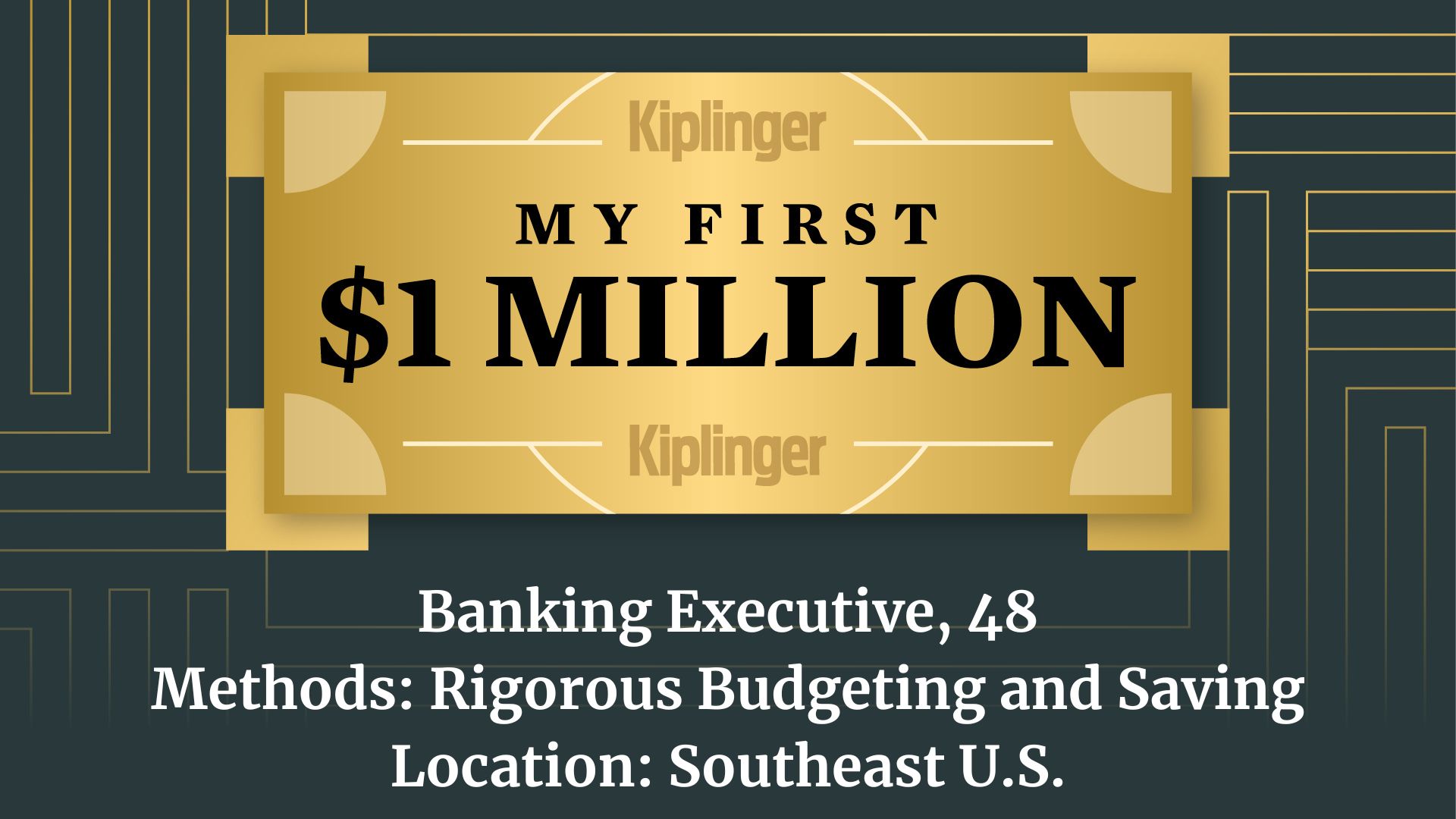Four Keys to Planning Your Retirement Income Distributions
When you have a well-thought-out retirement income plan, you can quit worrying about running out of money in retirement.


Most people work 35 to 45 years or more. It’s a long haul, and when it’s finally over, they deserve to enjoy their retirement. If they’ve been diligent about their saving and overall retirement planning, the fruits of their decades of labor can be quite rewarding.
Knowing how to navigate the distribution phase of retirement is crucial. And the first thing to know is that retirement planning doesn’t end on your last day of work — when the distribution phase begins. This is when you start using the savings and investments built up during the accumulation phase to supplement regular income from Social Security, pensions and other income streams while supporting your retirement lifestyle. And though this new stage of life you’ve worked so hard toward can be fun and liberating, the idea of spending money with no income from work can cause stress and worry. Did you save enough, and will it last long enough?
Once you’re ready to retire and are living off your assets, you can ease your concerns by having a strong grasp of your distribution plan. Here are four steps you can take to come up with a plan before retirement that will allow you to determine your income needs, take distributions smartly and retire comfortably.
From just $107.88 $24.99 for Kiplinger Personal Finance
Become a smarter, better informed investor. Subscribe from just $107.88 $24.99, plus get up to 4 Special Issues

Sign up for Kiplinger’s Free Newsletters
Profit and prosper with the best of expert advice on investing, taxes, retirement, personal finance and more - straight to your e-mail.
Profit and prosper with the best of expert advice - straight to your e-mail.
1. Start with your priorities
If you plan to travel extensively, you’ll want to build that priority into your budget. If you're a homebody, your priorities will be geared more toward maintaining your home and spending on your hobbies. Someone who wants to leave a legacy would have a different way of investing, because they’re looking at long-term objectives with their money.
It helps to have an honest conversation with your spouse to see what’s important to you both. Write down the top five things that matter to you and discuss them together.
2. Focus on principal-guaranteed accounts
Unless they are significantly downscaling their lifestyles, most people in retirement can expect to spend 20% more than they did during their working years because they will be full-time consumers. Thus, it’s important to know where the money will come from.
One dependable stream is from a bucket containing principal-guaranteed accounts — certificates of deposit (CDs), fixed annuities, market-linked CDs and fixed-index annuities. The other bucket contains growth accounts, which are where investments can fluctuate in value, such as stocks.
The idea is to draw distributions from cash but not from the stock bucket. The stock bucket can be partially liquidated occasionally as is necessary to replenish cash, but only when the market is up.
Overall, it’s important during the distribution phase to control the withdrawal rate so that retirement savings are not exhausted during your lifetime. An income or distribution plan can give a clearer picture of what a lifetime of withdrawals will look like.
3. Convert to a Roth IRA
Converting portions of your traditional IRA to a Roth IRA over a series of years well before retirement makes sense for three primary reasons:
- All the growth in your Roth will be tax-free
- Any income you take from the account will be tax-free and penalty-free, assuming you are 59½ or older and the Roth IRA has been in existence and funded for at least five years
- Money you bequeath from a Roth IRA will go to beneficiaries tax-free
Yes, you pay taxes on the amount you convert to a Roth, but we currently have historically low tax rates, and being able to pay the taxes now rather than later can result in important savings in retirement. It’s best to convert over a period of years instead of everything at once; that way, you can minimize your tax bill and determine how much to convert each year based on which tax bracket you’re in.
4. Plan for and protect against the worst, just in case
What would happen to your money if a situation like the 2008 financial crisis occurred again? If all your money is invested in stocks, that’s going to destroy your plan. You can protect yourself from a downturn by taking income from your principal-guaranteed accounts. At the same time, you don’t want to be selling shares to cover expenses; doing so when their values are lower leaves you with fewer shares to benefit from when stocks rebound. And bonds, contrary to popular belief, are not safe right now, because we could be in a rising interest rate environment. When interest rates go up, bond prices tend to drop.
Creating a sound distribution strategy can help you plan better for more volatile scenarios. By knowing how your account balances might be affected in years where your investments lose money, you’re able to appropriately reduce market risk in your portfolio or set aside a few years of cash holdings to cover longer periods of portfolio distributions. One way to stress-test your portfolio, and ideally well before retirement, is to conduct a Monte Carlo Simulation, which helps investors see how a portfolio might perform in a wide range of possible stock market scenarios.
For many Americans, one of the biggest fears about retirement is running out of money in their portfolio. Saving more is an obvious way to try to prevent that, but it may not be enough of a strategy for you to avoid this stressful outcome. Working with a financial planner to develop a distribution plan for spending your money in retirement is essential if you want your nest egg to last the rest of your golden years.
Dan Dunkin contributed to this article.
The appearances in Kiplinger were obtained through a PR program. The columnist received assistance from a public relations firm in preparing this piece for submission to Kiplinger.com. Kiplinger was not compensated in any way.
Related Content
- In What Order Should You Tap Your Retirement Funds?
- The Five Stages of Retirement (and How to Skip Three of Them)
- Six Financial Actions to Take the Year Before Retirement
- Five Things I Wish I’d Known Before I Retired
- Retirees’ Anti-Bucket List: 10 Experiences You Don’t Want
Profit and prosper with the best of Kiplinger's advice on investing, taxes, retirement, personal finance and much more. Delivered daily. Enter your email in the box and click Sign Me Up.

Marc is the Financial Planner at Decker Retirement Planning office in Bellevue, Wash., and a Certified Financial Planner™ professional. He has over a decade of experience in Wealth Management and Financial Advising. He brings with him a client-first perspective that allows him to work alongside clients as a fiduciary and consultant. Marc grew up in the Pacific Northwest before serving 10 years as a Cryptologist in the U.S. Navy, working in the Navy Intelligence field in support of global, strategic and tactical missions in various regions, including multiple deployments overseas.
-
 How to Safely Open an Online Savings Account
How to Safely Open an Online Savings AccountOnline banks offer generous APYs that most brick-and-mortar banks can't match. If you want to make the switch to online but have been hesitant, I'll show you how to do it safely.
-
 7 Ways to Age Gracefully Like the Best Stock Photo Seniors
7 Ways to Age Gracefully Like the Best Stock Photo SeniorsAs a retirement editor, I've gleaned valuable wisdom (and a lot of laughs) from one older couple that tops the seniors' stock photo charts.
-
 My First $1 Million: Banking Executive, 48, Southeast U.S.
My First $1 Million: Banking Executive, 48, Southeast U.S.Ever wonder how someone who's made a million dollars or more did it? Kiplinger's My First $1 Million series uncovers the answers.
-
 7 Ways to Age Gracefully Like the Best Stock Photo Seniors
7 Ways to Age Gracefully Like the Best Stock Photo SeniorsAs a retirement editor, I've gleaned valuable wisdom (and a lot of laughs) from one older couple that tops the seniors' stock photo charts.
-
 Time to Close the Books on 2025: Don't Start the New Year Without First Making These Money Moves
Time to Close the Books on 2025: Don't Start the New Year Without First Making These Money MovesAs 2025 draws to a close, take time to review your finances, maximize tax efficiency and align your goals for 2026 with the changing financial landscape.
-
 Is Fear Blocking Your Desire to Retire Abroad? What to Know to Turn Fear Into Freedom
Is Fear Blocking Your Desire to Retire Abroad? What to Know to Turn Fear Into FreedomCareful planning encompassing location, income, health care and visa paperwork can make it all manageable. A financial planner lays it all out.
-
 Gold and Silver Shine as Stocks Chop: Stock Market Today
Gold and Silver Shine as Stocks Chop: Stock Market TodayStocks struggled in Friday's low-volume session, but the losses weren't enough to put the Santa Claus Rally at risk.
-
 Your Year-End Wellness Checklist for a Healthier 2026
Your Year-End Wellness Checklist for a Healthier 2026Skip the fleeting resolutions and start the new year with a proactive plan to optimize your longevity, cognitive health, and social vitality.
-
 3 Trips to Escape the Winter Doldrums, Including An Epic Cruise
3 Trips to Escape the Winter Doldrums, Including An Epic CruiseThree winter vacation ideas to suit different types of travelers.
-
 How to Master the Retirement Income Trinity: Cash Flow, Longevity Risk and Tax Efficiency
How to Master the Retirement Income Trinity: Cash Flow, Longevity Risk and Tax EfficiencyRetirement income planning is essential for your peace of mind — it can help you maintain your lifestyle and ease your worries that you'll run out of money.
-
 I'm an Insurance Expert: Sure, There's Always Tomorrow to Report Your Claim, But Procrastination Could Cost You
I'm an Insurance Expert: Sure, There's Always Tomorrow to Report Your Claim, But Procrastination Could Cost YouThe longer you wait to file an insurance claim, the bigger the problem could get — and the more leverage you're giving your insurer to deny it.